Search Results for Tag: university
Little monsters under your desk
Yes, it’s true. You are not alone in your office. Even if you are not at work, there’s someone (or something) living right under your desk, in your office’s restroom, or inside of your keyboard. How is that? Researches from the University of Oregon in Eugene (USA) examined 155 rooms of a University building – offices, classrooms and toilets. According to a paper, published in the “PLOS One” magazine, they identified about 30,000 different species of bacteria. A few of them could be found in each of the rooms, some only lived in certain spaces.
The researches identified basically Proteobacteria and Firmicutes cultures. Those are common to be found inside of buildings and close to humans, plants or in the soil. They also lived in the restrooms, alongside bacteria strains that live on skin or inside humans, such as gut bacteria (for example Lactobacillus or E. coli). No big surprises here.
What does that mean for the office people? After all, it’s us who work and live with tens of thousands of those species every day. It does not mean a lot yet. Research has to go on now to estimate if the bacteria do have a bad, good or at least any influence on the human wellbeeing. But the examinations already showed that design and facilities of different rooms do have an influence on the bacteria found in the rooms. If the room was air conditioned it was mainly filled with strains that are heat- or drought-resistant. Rooms with a regular ‘natural’ ventilation were crowded with bacteria that usually lives outside of buildings.
What’s it like to study sustainability?
Everyone talks about sustainability. But what’s it like to actually study the subject at university? And indeed, what does a university that teaches sustainable development look and feel like? Our reporter Laura Hennemann went to have a look at an unusual institution near Berlin.
Towering beech and spruce trees and plenty of clean, fresh air – that’s the first impression I get of the campus of the HNEE (Hochschule für Nachhaltige Entwicklung Eberswalde) or the University of Applied Sciences for Sustainable Development. It seems like the perfect setting for a university where students come to learn how to shape a more sustainable future.
The HNEE is located in the small town of Eberswalde, approximately 50 kilometres north-east of Berlin. It’s home to some 2,000 students who can choose from 16 different bachelor and master degree courses, among them forest information technology, marketing in organic agriculture and sustainable tourism management.
I’m curious about what kind of people a university of its kind draws. Do the students feel elitist given that they are studying to learn how to tackle some of the most pressing ecological problems of our time, studying to save the planet?
I meet Sina, Hanna and Fee, three young women studying international forest ecosystem management. They tell me that the students are a mixed bunch, ranging from iPhone owners, tree huggers to some rather extreme environmentalists. And it’s not just the students. The professors too have different mind-sets, they say.
The one thing the three agree on is that studying at the HNEE can change your outlook. There are frequent discussions on the environment and a course on sustainability is compulsory for everyone in the first semester. Also, it’s the little details which affect the students, they tell me.
I had noticed them myself when wandering around the campus. The building’s energy performance certificate is pinned prominently on a noticeboard at the entrance. There are waste bins in each room, consisting of three bright-coloured parts for easy waste separation. And of course, the printers and photocopiers use recycled paper. Another, probably unrelated, detail caught my eye – Both the ladies’ and the men’s toilet has a diaper-changing area. I secretly enjoy such progressive thinking.
But it’s much more than such small details. The students tell me that the campus is powered by energy from a green electricity provider. Some buildings even have their own photovoltaic systems. And all the food at the canteen is organic. The environment certainly does make every student a little more ecologically inclined, the students tell me, regardless of your attitude when when you started
I go on to the second campus of the HNEE in the town center where I meet Vera Luthardt. She is a professor at the faculty of landscape management and nature conservation and proud of the new name the HNEE gave itself: “To be very honest, I was almost surprised that implementing the term “sustainability” got a majority in 2010,” she says. And even more importantly, Luthardt adds, was the subtitle when the new name was announced: “Our name reflects our mission.”
Luthardt’s own research focuses on bog landscapes. Among other things, she and her colleagues are currently investigating how the re-wetting of ecologically damaged bogs might bind CO2.
And it’s not just young students that the HNEE is targetting. In addition to the bachelor’s and master’s degree courses, the university also offers an extra distance learning degree for working professionals in the corporate sector. It’s called strategic sustainability management.
“We cannot wait another entire generation for a rethink to take place,” Luthardt says. She has been teaching at the HNEE since 1993 and is proud to be working at a university which sets itself apart from the rest.
The President calls to act – Obama’s climate speech
US-President Barack Obama gave a speech on climate change yesterday. His words could lead to a milestone-process for US climate politics. He made clear that the United States have to play a leading role in the world’s ambitions to tackle global warming.
The plans the president rolled out are foreseeable wide-ranging, including a limit on carbon pollution for the first time in US history.
Emissions need to fall by 17 percent until 2020, the President said. This will “put an end to the limitless dumping of carbon pollution.”
The emissons already dropped last in 2012 on the lowest amount in 20 years. But not for climate security reasons. The moderate economic developement of the United States and the growing use of natural gas (which has an lower amount of carbon dioxide) rather were responsible for the decreasing numbers.
The exact plans
According to the speech he held in Washington, the United States would boost the production of renewable energy, increase efficiency standards and prepare communities to deal with higher temperatures.
So what exactly the president wants to happen?
The energy that is harnessed from sun and wind should be doubled, according to Obama. That makes a power supply for more than six million househoulds in the US. The president also spoke about the highly debated Keystone Pipeline-project, that is planed to transport tar sand-oil from Canada to refineries at the Gulf of Mexico. This pipeline will only be build if it „does not significantly exacerbate the problem of carbon pollution.“
Another point was the building of a new nuclear power plant, the first one in 30 years. In opposition to Germany for example US still count on nuclear power as a green and save source of energy.
Impacts for the private sector
Obamas plans also reach for the private sector as well. Besides a fuel consumption that is now enlarged from cars to trucks the President wants to fight the waste of energy in private homes, public buildings or companies by supporting building insulation or energy saving light sources.
So, the speech offers a lot of plans. But what can be done? Nothing can be established immediatly, there’s always a long process about a few years. And Obamas presidency lasts for three more years. But at least the plans would be put in place through an executive order, bypassing the Congress, which has stalemated over climate legislation in recent years.
During his presentation the audience could literally see what all this is about: The oppressive heat of June often forced beads of sweat on the presidents forehead.



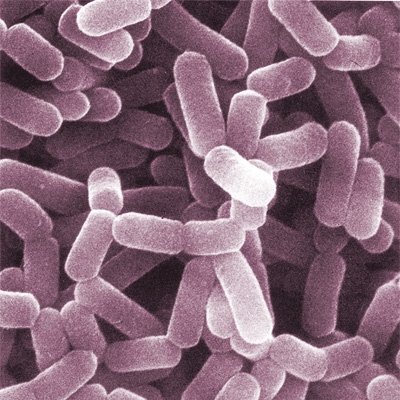

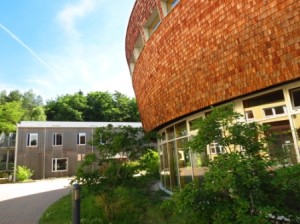
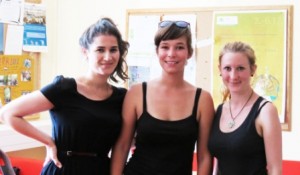
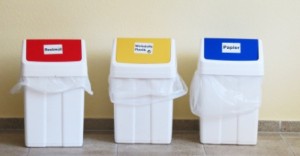
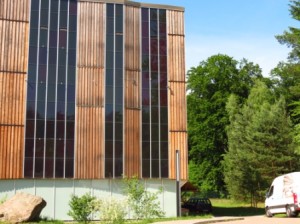
Feedback